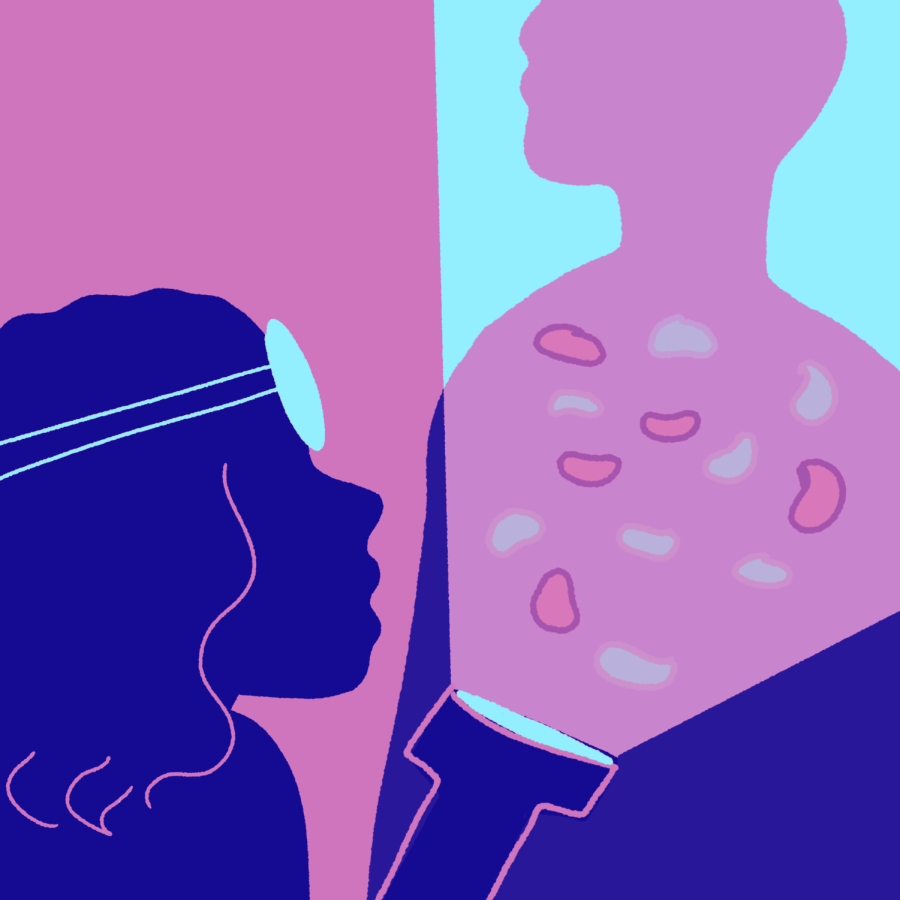Beckman research team finds new way to identify healthy cells
Mar 9, 2022
Last updated on March 10, 2022 at 12:52 p.m.
When Gabriel Popescu, professor in Engineering, visited a major pharmaceutical company a few years ago, it shocked him that the chemicals they use to determine cell viability kill the cell in 15 minutes or less.
“It’s like checking the pulse of a patient with a razor blade,” Popescu said.
But after two years of research, Popescu and his team at the Beckman Institute for Advanced Science and Technology found a way to determine the survivability of a cell that would not use deadly chemicals.
The team introduced an approach that identifies live and dead cells using phase imaging and deep learning. This advancement has positive implications for testing new medicines and determining patient response to treatment.
Get The Daily Illini in your inbox!
According to the team’s research paper, traditional methods of identification use dyes that only attach to cells that lost their membranes. The team’s study also shows that this method takes time to reach optimal staining levels.
Chenfei Hu, University alumnus and the leading researcher of the study, mentioned that the toxicity of the chemicals used in identification stains prevents long-term investigation. He pointed out that the approach wastes time and is costly since drug makers need to repeat the procedure over 1,000 times.
“You cannot deliver repeated experiments on one single cell,” Hu said. “Even 200 years after these chemicals were invented, people are still using them in a very old-fashioned way.”
Popescu said the recent studies have opened new directions for imaging technology that his laboratory has developed over the past 15 years.
“That’s how this whole research started.” Hu said. “By combining the imaging tools and the power of artificial intelligence, can we help cell health screening in a cheap, rapid and accurate way?”
They succeeded. The imaging displays the internal structure of a single cell by measuring the optical phase delay; the light gets delayed more where the cell regions are denser. This creates high-contrast images. The researchers then bring in an algorithm that reveals the biological information of cell components.
Results find that this label-free method has approximately 95% accuracy in evaluating cell viability. According to Hu, this success has never been achieved in any traditional way.
The study also reveals that after using the algorithm, the assessment of a cell only takes 100 milliseconds – about eight times faster than color imaging.
“Once it has learned, it’s instantaneous,” Popescu said. “It’s like once a child has learned what a cat and a dog is and what the difference is, the moment they see a dog, it takes a few milliseconds to know.”
Hu said that while previous approaches relied on manual counting, researchers now only need to put cells under the microscope and let the computer do the job. To Popescu, it is fun to sit in front of the screen and glance at how the computer automatically labels everything.
Hu also said he sees potential that this research could apply to many real-world settings. Hu envisioned that this new approach would save plenty of materials for drug makers who must repeatedly test cell viability when inventing new medicine.
Young Jae Lee, graduate student in LAS and a contributing author of the study, said that this new method is especially valuable in treating cancer patients by visualizing how the cells react to drug injections.
“We can see how the cells move around and how they change their shapes based on their health conditions,” Lee said. “It makes our work easier.”
Popescu revealed that his laboratory is trying to apply the new method to measure the viability of clusters of cells. He explained how hard it is to examine small tumors extracted from patients since light does not travel well through these thicker, closely-gathered tissues.
“Dealing with all the scattering is like trying to look through a cloud,” Popescu said. “We’ve actually made progress since we submitted this paper. We are very excited to bring it to these 3D structures with a lot more applications.”
Popescu said that keeping an invention only in laboratory studies limits its impact. He referred to at-home COVID-19 test kits which employ the same methods of phase imaging. Popescu said practicality in the real world is his ultimate goal.
According to Popescu, the research team has applied for a patent. He said his biotechnology company is now incorporating the hardware into their products.
“At the end of the day, we want to solve problems that people care about,” Popescu said.






